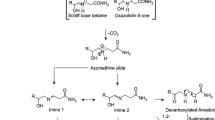Abstract
In collaboration with cooking experts, the preparation of French fries in oil and in ovens was optimized, aiming at optimum culinary quality combined with a minimum acrylamide content. French fries with 40–70 μg/kg acrylamide were consistently produced, i.e. with 5–10 times less acrylamide than currently normal. The raw potato should contain little reducing sugars, i.e. be of a suitable cultivar, and storage at temperatures below about 10 °C must be avoided. After cutting and elimination of the fines, the potato is immersed in standing cold or boiler-warm water for some 15 min in order to extract asparagine and sugars from the surface without washing out the starch. Pre-frying in oil (ca. 140 °C for 2.5 min) improves crispiness. Frying should occur at an initial oil temperature of about 170 °C, adding some 100 g potato/l oil. Since acrylamide formation increases exponentially towards the end of the process, the most important factor to keep acrylamide contents low is the determination of the proper end point of the frying process. French fries should be crispy with slight browning of the tips to achieve the typical flavor, but without general browning. Preparation in the oven, starting from frozen prefabricates, requires temperatures of around 190 °C or 220 °C, depending on whether or not the air is circulated. The proper determination of the end point is again the most critical step.




Similar content being viewed by others
References
World Health Organization (2002) Press Release WHO/51 27 June 2002
Opinion of the Scientific Committee on Food on new findings regarding the presence of acrylamide in food (2002)http://europa.eu.int/comm/food/fs/sc/scf/out131_en.pdf
Becalski A, Lau BP-Y, Lewis D, Seaman SW (2003) J Agric Food Chem 51:802–808
Mottram DS, Wedzicha B, Dodson AT (2002) Nature 419:448
Stadler RH, Blank I, Varga N, Robert F, Hau J, Guy PA, Robert M-C, Riediker S (2002) Nature 419:449
Weisshaar R, Gutsche B (2002) Dtsch Lebensm Rundsch 98:397–400
Biedermann M, Noti A, Biedermann-Brem S, Mozzetti V, Grob K (2002) Mitt Lebensm Hyg 93:668–687
Tipps zur Herstellung von Pommes frites mit minimierter Acrylamid-Belastung (2003) www.klzh.ch or www.belvoirpark.ch
Biedermann M, Biedermann-Brem S, Noti A, Grob K, Egli P, Mändli H (2002) Mitt Lebensm Hyg 93:638–652
Biedermann M, Biedermann-Brem S, Noti A, Grob K (2002) Mitt Lebensm Hyg 93:653–667
Arnold U, Ludwig E, Kühn R, Möschwitzer U (1994) Z Lebensm Unters Forsch 199:22–25
Zoller O, Dudler V, Brunner K, Reinhard H, Rhyn P, Rupp H, Sager F, Streule M, Zimmermann H (2003) http://www.bag.admin.ch/dienste/medien/2002/d/02121958.htm
Wasserbacher B, Elmadfa I (2002) Ernährung/Nutrition 26:493–502
Swiss Federal Office of Public Health (2002) http://www.bag.admin.ch/verbrau/aktuell/Q&A_Acrylamide_D.pdf.
Putz B, Lindhauer MG (1994) Agribiol Res 47:335–344
Amrein TM, Bachmann S, Noti A, Biedermann M, Ferraz Barbosa M, Biedermann-Brem S, Grob K, Keiser A, Realini P, Escher F, Amadò R (in press) J Agric Food Chem
Burton WG (1989) The potato. 3rd edn. Longman, Singapore, pp 431–447
Richardson DL, Davies HV, Ross HA (1990) Potato Res 33:241–245
Sowokinos JR (2001) J Potato Res 78:221–236
Coffin RH, Yada RY, Parkin KL, Grodzinski B, Stanley DW (1987) J Food Sci 52:639–645
Noti A, Biedermann-BremS, Biedermann M, Grob K (2003) Mitt Lebensm Hyg 94:167–180
Putz B (1981) Veröff Nr. 4865, http://www.bagkf.de/pommesFrites.pdf
Putz B, Kempf W (1981) Gordian 81:196–201
Putz B, Kempf W (1983) Kartoffelbau 34:239–240, 245–247
Gertz Ch, Klostermann S (2002) Eur J Lipid Sci Technol 104:762–771
Author information
Authors and Affiliations
Corresponding author
Rights and permissions
About this article
Cite this article
Grob, K., Biedermann, M., Biedermann-Brem, S. et al. French fries with less than 100 μg/kg acrylamide. A collaboration between cooks and analysts. Eur Food Res Technol 217, 185–194 (2003). https://doi.org/10.1007/s00217-003-0753-9
Received:
Published:
Issue Date:
DOI: https://doi.org/10.1007/s00217-003-0753-9




